Table of Contents
Do you want to add refrigerant to the AC? And experience the ultimate cooling at your place? Having an AC unit at home is a blessing. Most importantly, an ac that gives out cool air without any issues. Sometimes, you might face problems like noise inside the compressor or other problems that make you reset your AC unit repeatedly. Adding a refrigerant to your AC makes you feel the cold air again, as it absorbs all the air in your surroundings, releasing cool temperature. If you’re lost and don’t know where to start, worry not; we are here to help. Let us walk through a process of understanding how we can add refrigerant. Therefore, we can enjoy cooler air in this scorching summer heat.
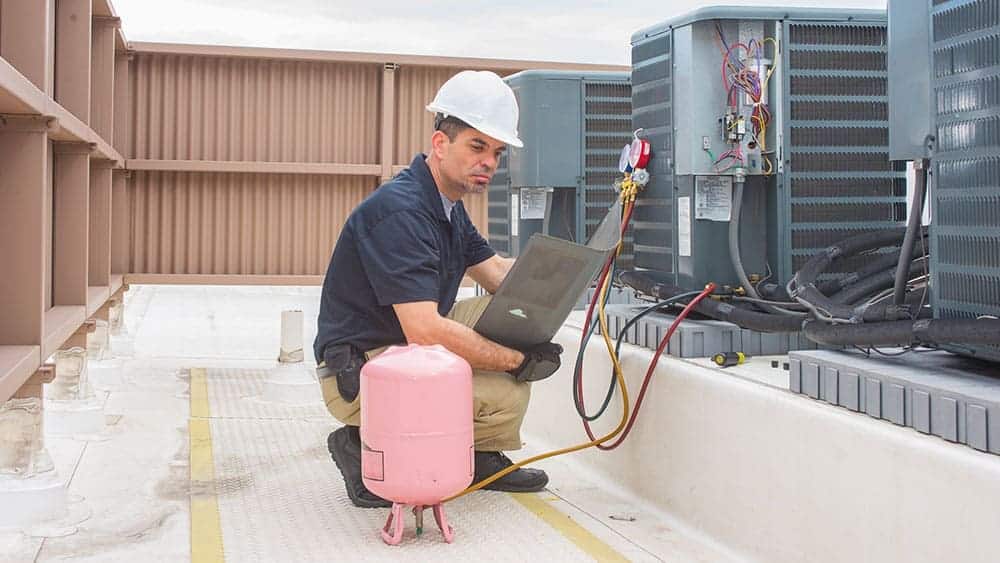
Add Refrigerant to AC
Before you add AC refrigerant to your cooling machine, you also need to make sure of other things. For example, it is like understanding the refrigerant consumption of a gas AC and all those necessary things. Adding refrigerant to your AC unit requires specific tools and a basic understanding of home AC units. An accurate diagnosis of the issue is essential before moving on. When paired with equipment like evaporator coils and compressors, refrigerant, such as R-22 or R410A, plays a critical role in cooling air by collecting heat from the surrounding environment. Recognizing its purpose makes it easier to understand why maintaining effective air conditioning systems is essential. If you need clarification about the safety hazards or the complexities of the process, it’s best to use a certified specialist. Let us first start with the basics. Understanding how a refrigerant works.
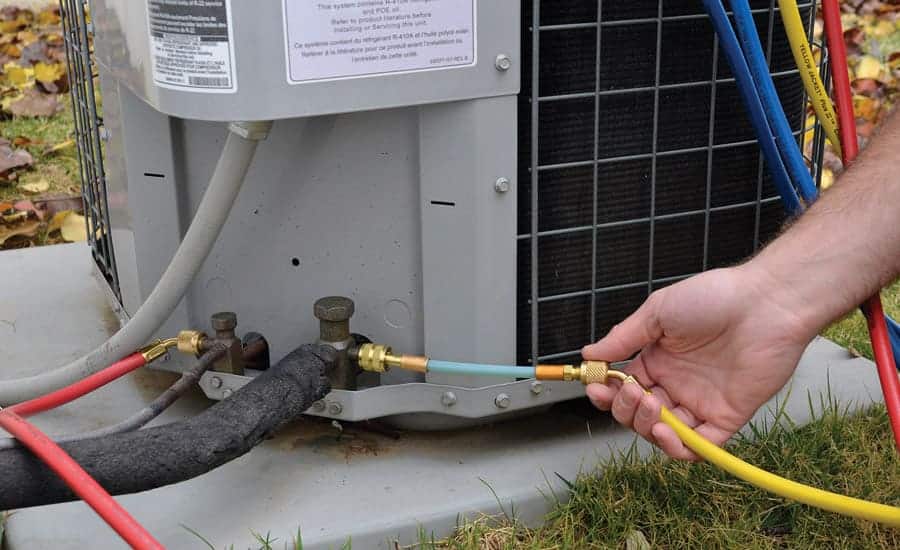
What is an AC Refrigerant
In theory, what is an AC refrigerant? Chemicals called AC refrigerant, also known as Freon, R-12, R-22, R-134a, and R-410a, are essential to cooling systems. It absorbs and transfers heat as it changes from a liquid to a gas. It absorbs heat indoors and changes from a low-pressure gas to a high-pressure liquid. Refrigerant is found in AC copper coils. A fan cools the refrigerant back into a low-pressure gas by forcing hot air over coils outside. To preserve comfort, the cooled air is distributed by another interior fan. In doing so, the temperature in residences and commercial buildings is regulated. Frequent HVAC professional maintenance maximizes efficiency and reduces problems such as Freon recharge requirements or refrigerant leakage. Modern systems with eco-friendly refrigerants, such as R-410a, can replace older systems’ AC units and increase efficiency, which may result in cheaper electricity costs.
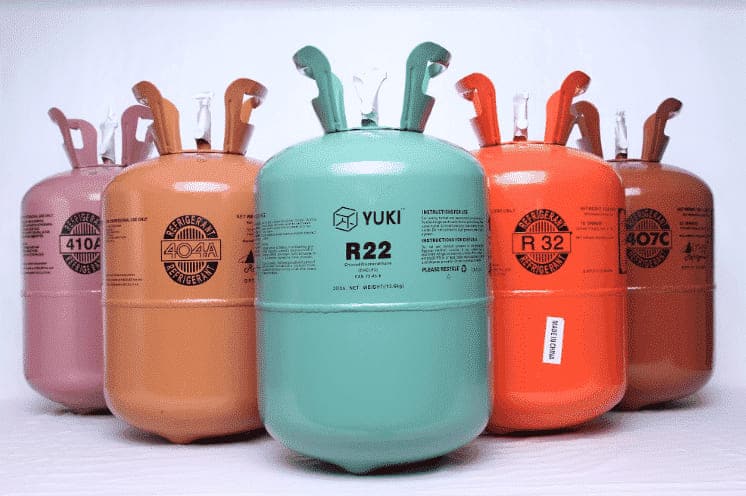
Types of AC Refrigerants
Now, you must be thinking about the various types of refrigerants used. Chlorofluorocarbons (CFCs), Hydrochlorofluorocarbons (HCFCs), and Hydrofluorocarbons (HFCs) are the three primary forms of AC refrigerants. Because CFCs contributed to the greenhouse effect and ozone depletion, they were phased out, including R12. HCFCs, such as Freon of Aircon or R22, were widely used in central air conditioning systems but are also being phased out because of environmental concerns. Production of these chemicals must end entirely by 2020. The current equivalent of HCFCs is an HFC, such as R410A, also called Puron, which offers higher environmental friendliness (no chlorine content) and reliable, effective cooling with superior air quality.

· CFCs, or chlorofluorocarbons
Because CFCs contributed to the greenhouse effect and ozone depletion, they were phased out, including R12.
· HCFCs, or hydrochlorofluorocarbons
HCFCs, such as Freeon or R22, were widely used in central air conditioning systems but are also being phased out because of environmental concerns. Production of these chemicals must end entirely by 2020.
· HFCs, or hydrofluorocarbons
The current equivalent of HCFCs is an HFC, such as R410A, also called Puron, which offers higher environmental friendliness (no chlorine content) and reliable, effective cooling with superior air quality.
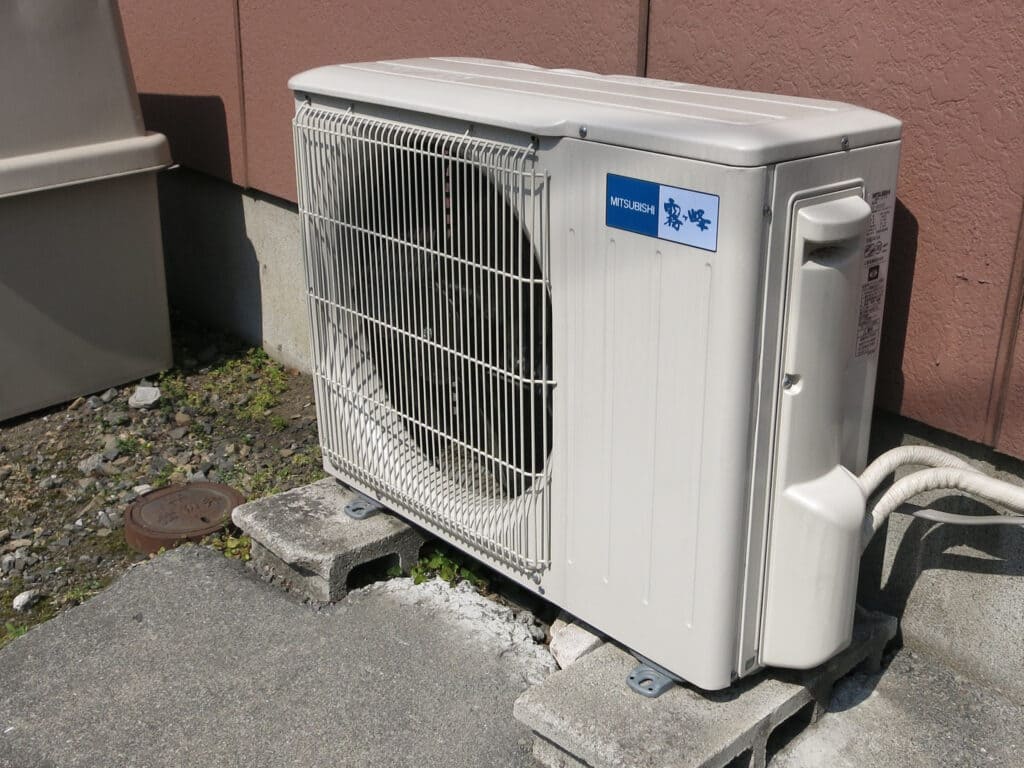
Adding Refrigerant to AC: A Guide
The freon levels must be correct for an air conditioner to operate efficiently. Low levels may harm the system and reduce cooling.
Step 1: Determining the Refrigerant Need
Check the air temperature: Warm or room temperature air from the vents could indicate a malfunctioning thermostat or low refrigerant.
Examine the coils: Coils covered with ice or frost indicate a refrigerant leak, reducing cooling effectiveness.
Look for Water Accumulation: If water accumulates close to the furnace, condensation from refrigerant leaks may be present.
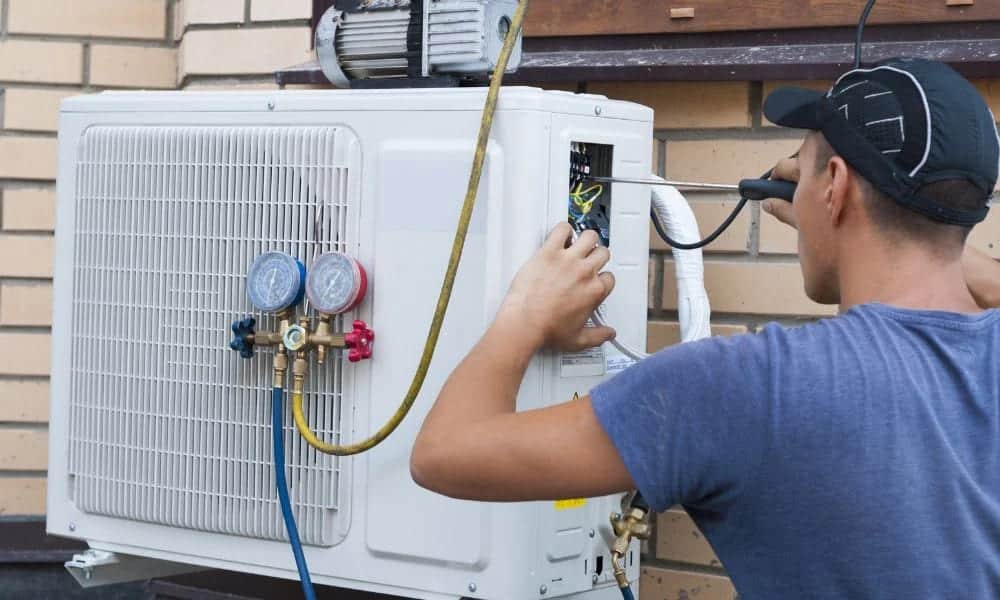
Step 2: Determining the Type of Refrigerant
Consult the Guidelines: To determine the new refrigerant for AC units, consult the control box or handbook for the AC unit.
Common Types of Refrigerants: R410A and R-22 (phased out). Utilize the appropriate refrigerant to prevent harm.
Step 3: Wear protective gear to ensure safety.
Gloves and safety goggles shield the eyes and skin from discomfort.
Refrigerant should never be inhaled because it might have serious health effects.
Think About Hiring Expert Assistance: Employing qualified HVAC contractors guarantees accuracy and safety.
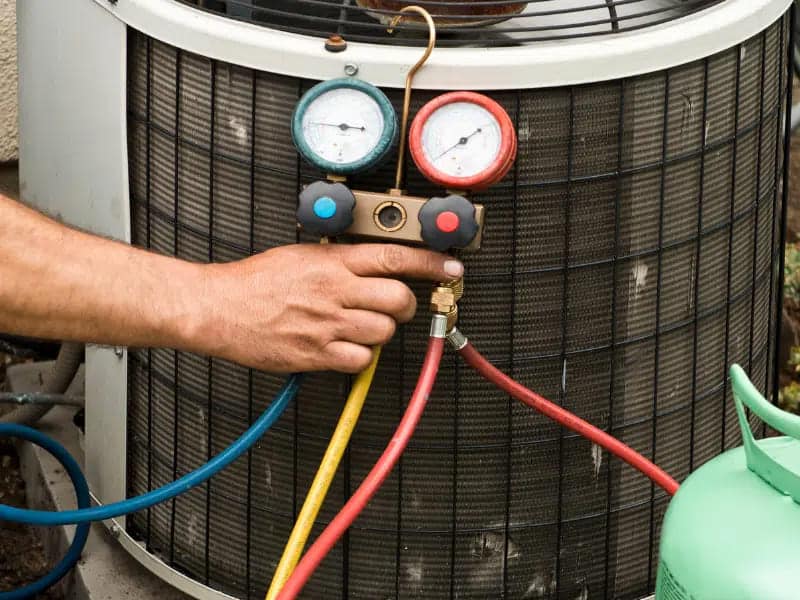
Step 4: AC Unit Preparation
Cut-Off Power: To ensure safety, turn off the air conditioning at the thermostat and breaker.
Gauges should be connected to valve connections to ensure the hose is positioned correctly.
Step 5: Refrigerator Addition
Activate the air conditioner: Give it fifteen minutes to stabilize.
Canister Open: To open the canister, twist the spout.
Connect Hose: Join the yellow hose to the center valve connection on the canister.
Slowly Release Refrigerant: To add refrigerant, gradually open the low-pressure valve.
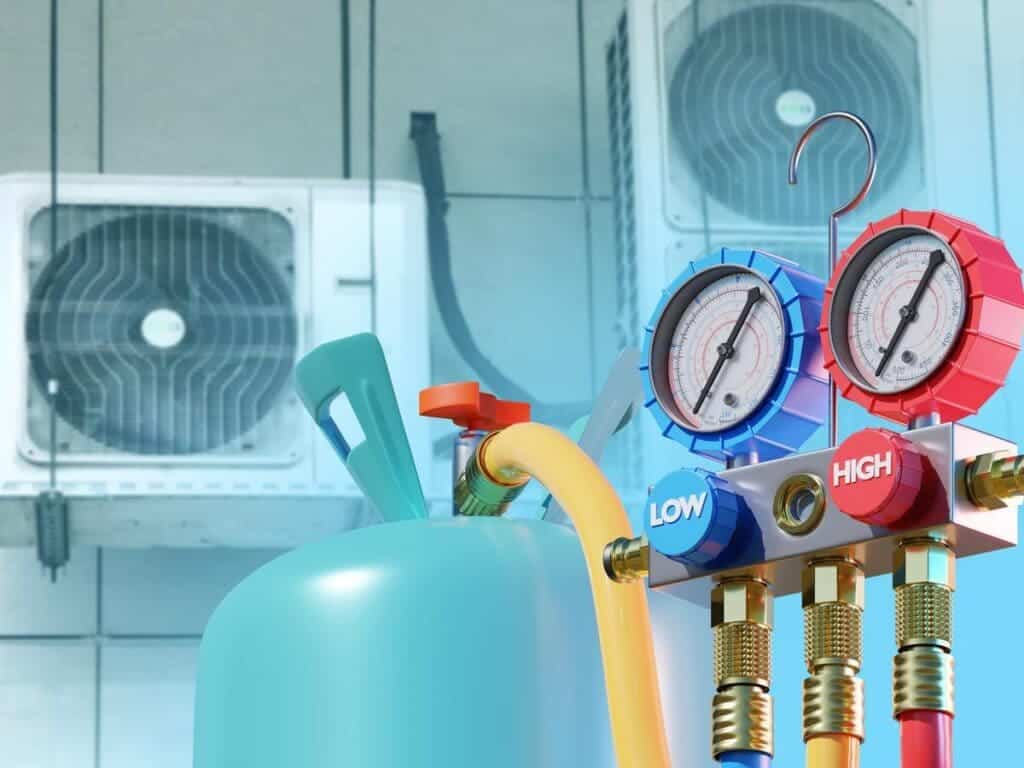
Keep an eye on gauge readings. The target subcooling temperature listed on the outdoor unit’s rating plate should be kept in mind.
Shut Off Valve: After attaining the desired temperature, close the valve.
Cut All Hoses: Shut down the canister and cut all the gauges and hoses.
Step 6: Carrying Out the Leak Test to Add refrigerant to AC
Employ a Leak Detector: Use an electronic leak detector to look for leaks in refrigeration components.
Professional Inspection: For a comprehensive leak test, contact a licensed expert.
Appropriate refrigerant levels and routine maintenance are essential for effective AC performance. By following these instructions and taking safety measures, you can safely add refrigerant to your air conditioning unit and guarantee maximum cooling efficiency.
Always remember to get professional help while handling refrigerants if you need clarification.
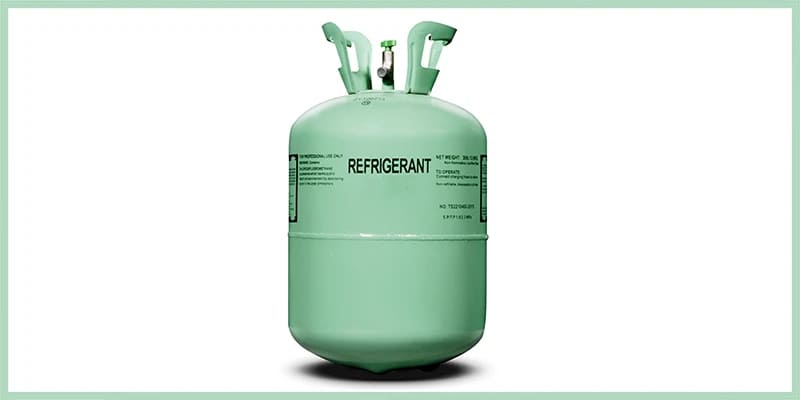
Final Thoughts: Add Refrigerant to AC
Coming to the end, we’d say it is essential to add refrigerant to AC in the world of cooling air machines. Every variety, from the conventional R22 to the more recent R410A refrigerant, is vital to preserving your air conditioner refrigerant’s effectiveness. However, refrigerant must be replaced when systems age or experience freon leaks. This tutorial has walked readers through the complexities of AC refrigerants, including information on types, prices, and adding refrigerant procedures.
In conclusion, homeowners may minimize energy refrigerant costs for AC units, properly maintain their AC equipment, and guarantee peak cooling efficiency by being knowledgeable. Being proactive about refrigerant levels can save expensive repairs and extend your HVAC system’s life, whether it’s a window AC unit, a central air conditioning system, or a refrigerant for a mini split AC unit. Thus, contact an HVAC technician when you notice warm air lingering and quickly address any possible refrigerant problems. After all, well-maintained air conditioning equipment manages your electricity bills and keeps you cool.
